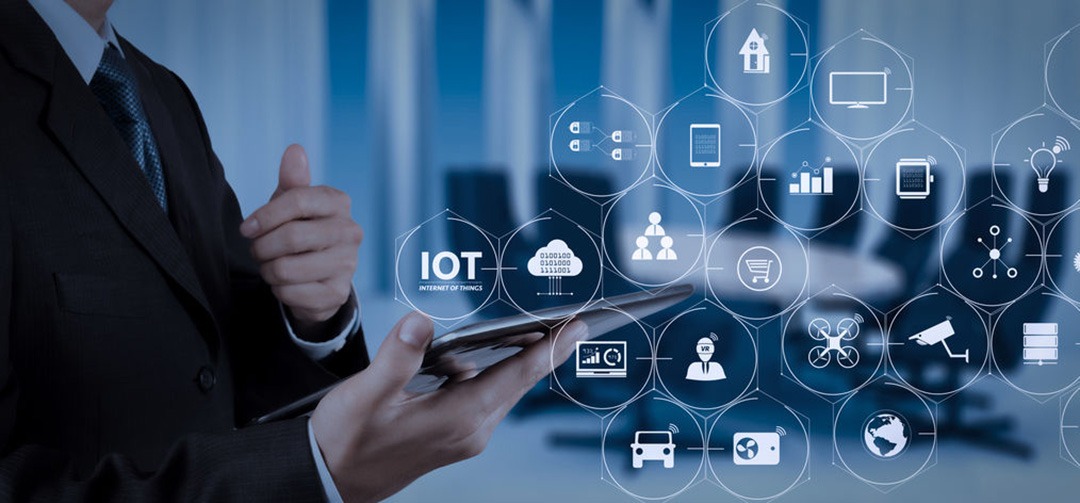Trends in Data-Driven Internet of Things (IoT)

Over the last year, we’ve watched companies develop strategies and build capabilities within the Internet of Things (IoT) arena. While some of these companies already have a solid existing market positioning in IoT, others are in the early stages and are focused on moving quickly.
In this post, we’ll go over some emerging themes in data-driven IoT across a section of industries (including healthcare, high-tech, manufacturing, and consumer products), as well as share concrete examples. These themes include: Focusing on the customer, asset virtualization and digital twins, disrupted information channels, data rights and access. We expect these themes to continue to evolve in 2017 and 2018, and this overview will give you a solid place to start in understanding the IoT ecosystem.
Focusing on the customer
Clients are focusing on the impact of IoT solutions to their customers. They built their product development and data strategy plans by asking the right questions about those customers:
- who are they?
- how do they use our products?
- how to we retain them?
- what needs are unmet?
They found success in acting upon the business value of IoT solutions, rather than on the technology itself.
For example, one of our clients is a traditional hardware manufacturer with assets that are deployed in retail, manufacturing, hospitals, and other settings. This presence allows them to capture and measure unique aspects of the customer experience, such using a hotspot to understand where the customers are located in the store and what information they are accessing. The client can then combine this information with other sources—either derived from their assets or from external sources. One possibility would be connecting the customer’s location in the store, their browsing for a better price, and a promotion to purchase those goods in the store.
This customer-centric view of IoT solutions is steeped in understanding customer needs and how to derive benefits, based on the company’s current market position (existing customer touchpoints) or potential market position (future or acquired touchpoints). In the example above, where our client’s existing assets provided a very targeted service to their customers, they are now thinking of what else they can develop or offer. In an effort to further deepen the customer experience, the company is also investing in customer journey and value-chain mapping within each setting.
By focusing on their customers, clients have been able to use IoT data to understand behavior, engagement, support needs, and even churn. This understanding enables companies to build “stickier” and higher margin products and services.

Asset virtualization and digital twins
The focus on customers is leading to a deeper exploration of the physical and digital design of products. While the physical product may be well known to the company and its customers— including model details, shape, size, features, and accessories—the digital product attributes have opened an entirely new frontier of having “digital twins,” which are data-oriented representations of the physical product and its state.
One way to define digital twins is by the bill-of-materials that go into the actual asset, location and position (using GPS), physical bounds of the asset, and conditions under which it is exposed and operates. Some of these attributes are defined by how the asset is designed, constructed, and deployed. Therefore much of the “twin” draws from the materials that go into it, the applied learnings from R&D, and information from its predecessors.
Given the proliferation of sensors, external and environmental data from other sources, and even customer feedback, the inclusion of more data can give digital twins greater depth. For example, a digital twin of a physical entity may include material properties, manufacturing specifications, details on transportation and shipment, current state attributes such as temperature and location, and even user interactions. This opportunity has led to a rethink in product design and innovation team configurations, moving beyond researchers and engineers to now include data proficiency disciplines when creating new products and offerings. These teams can explore aspects such as new information sources from product instrumentation, data processing “on the edge,” and the real impact to decisions.
A cross-section of companies are capitalizing on this virtualization—beyond traditional tasks such as asset management. For example, industrials are able to use digital platforms to articulate their physical assets and, with the aid of predictive models, develop and test smart strategies on managing or deploying those assets. These models can always be tested against the most recent information, incorporating new facts on the ground or dynamics as the emerge—allowing for experiments that would be too risky, costly, or infeasible to implement in the real world.
Disrupted information channels
Either through product design limitations, channel access, or other constraints, companies do not have access to all the desired data about critical business concerns (such as customers or products). To fill information gaps, companies have often relied upon external partners to provide data. We’ve observed a shift in companies’ ability to address these information gaps through IoT. This trend includes both producing and consuming different information sources.
This expansion in available information sources has increased the ability of companies to gain needed data while bypassing traditional channels. For example, by instrumenting products with monitoring capabilities, companies that sell through distribution channels often no longer have to rely on channel partners or other economic signals to understand when and and by whom their products are consumed. This data is useful not just for internal concerns in product or sales, but also is valuable to other partners in the channel.
We are seeing strategies that consider the need for information collected by partners’ technologies and platforms (e.g., sensors, complimentary products), as well as the value proposition in sharing their own IoT data. For example, a client in medical device technology has recognized the need to instrument product features as simple as battery life. To the internal product team, this information helps give engineers an understanding of energy efficiency and product usage patterns—which can be used to improve future designs. For end users such as clinicians, this data can also be used to support service models and enable predictive maintenance capabilities across deployed devices within their patient populations.
This has created opportunities to by-pass dependencies on traditional channels through different alliances and data partnerships, deploying their own sensors, or even by using predictive and analytical models. Sometimes, existing product designs or data access limits the potential. In these cases, our clients have brought in data sources to proxy for missing IoT elements (e.g., census data, complaints data) and for potential new products and features made available by ecosystem partners (e.g., temperature, GPS), to deepen insights into customer and product performance behaviors.
Data rights and access
Having access to a signal or sensor does not mean you can do anything you want with it. In many of the industries we work with, data rights and access are top-level concerns—healthcare, for example. This challenge is compounded by the fact that regulations themselves are not static—and can change based on new laws and political environments. In such a scenario, how can you confidently participate in data ecosystems, build secure data-driven products, and remain compliant to regulations and agreements? In which cases can data processing, such as data de-identification and aggregation, provide the abstraction needed to confidently engage? When is data always too sensitive to share?
IoT data creates a number of legal, regulatory, and contractual challenges, especially since many of the sensors are simply “on” and capturing data. For example, the growth of voice-activated virtual assistants introduces the fear of hot mics that can pick up anything and be used for unintended purposes. Fixes include controlling the types of sounds a microphone could pick up, and customer relationship campaigns promising to only use the data for its intended purpose.
Some of our clients are building industrial IoT platforms that host and process a wide variety of data across customer segments such as healthcare, retail, energy, and defense. As such, there are a variety of immediate high value applications (e.g. equipment maintenance), as well as emerging ones (e.g., optimization algorithms across all products in the market).
One way the data rights challenges are being solved is with taxonomies and dynamic rules engines that take into account contract-specific language, local and national regulations, and the company’s own policies about privacy. Such an approach can establish a flexible, scalable method to account for ever-changing use cases, regulations, and requirements for access rights.
Looking forward
In the coming year, we expect companies to build on these themes, driven in part by the following motivational factors:
- Continued push to move up the stack from hardware to software, solutions, and services
- Further identification of the right place within the IoT value chain and competitive positioning where there is a “right to play”
- Push to use IoT and data to build deeper relationship with end customers, and gain greater awareness of products and value those products bring
- Ability to create more sticky services to end customers, creating a switching cost to competitors in others where none may have existed in a commodity market
Related links
Artificial Intelligence and Machine Learning in the Insurance Sector
crosslync.smartlab: Eine smarte Plattform zu Digitalisierung des Laborbetriebs
Crosslync: Wertschöpfungsketten End2End digitalisieren und Datensilos vernetzen
Professional Customer Experience Management
Analytical Customer Segmentation
Our Business Analytics competencies
Our Marketing, Sales & Service competencies
Our small to medium sized enterprise competencies
About us
Our positioning and mission statement: “Mastering the Digital Age!” We are an integrated management and technology consulting group and offer the conception and implementation of holistic digitization solutions in an integrated manner. In combination, you will receive strategic advice from us on the digitization of your company from real thought leaders with profound methodological knowledge, extensive transformation experience from successful IT system integrators with many years of industry experience and a high level of technological understanding, as well as deep expertise in generating value from data – the new gold of the 21st century – with the help of the latest artificial intelligence (AI) and cloud computing technologies. All this End2End from a single source for the entire transformation process! Find out more about us here.
Contact
Did you like the blog article? Do you have any questions about it? I am looking forward to your feedback.

Ravi Nirankari
Managing Partner
Strategy & Transformation Consulting
Send Email

Kommentare geschlossen